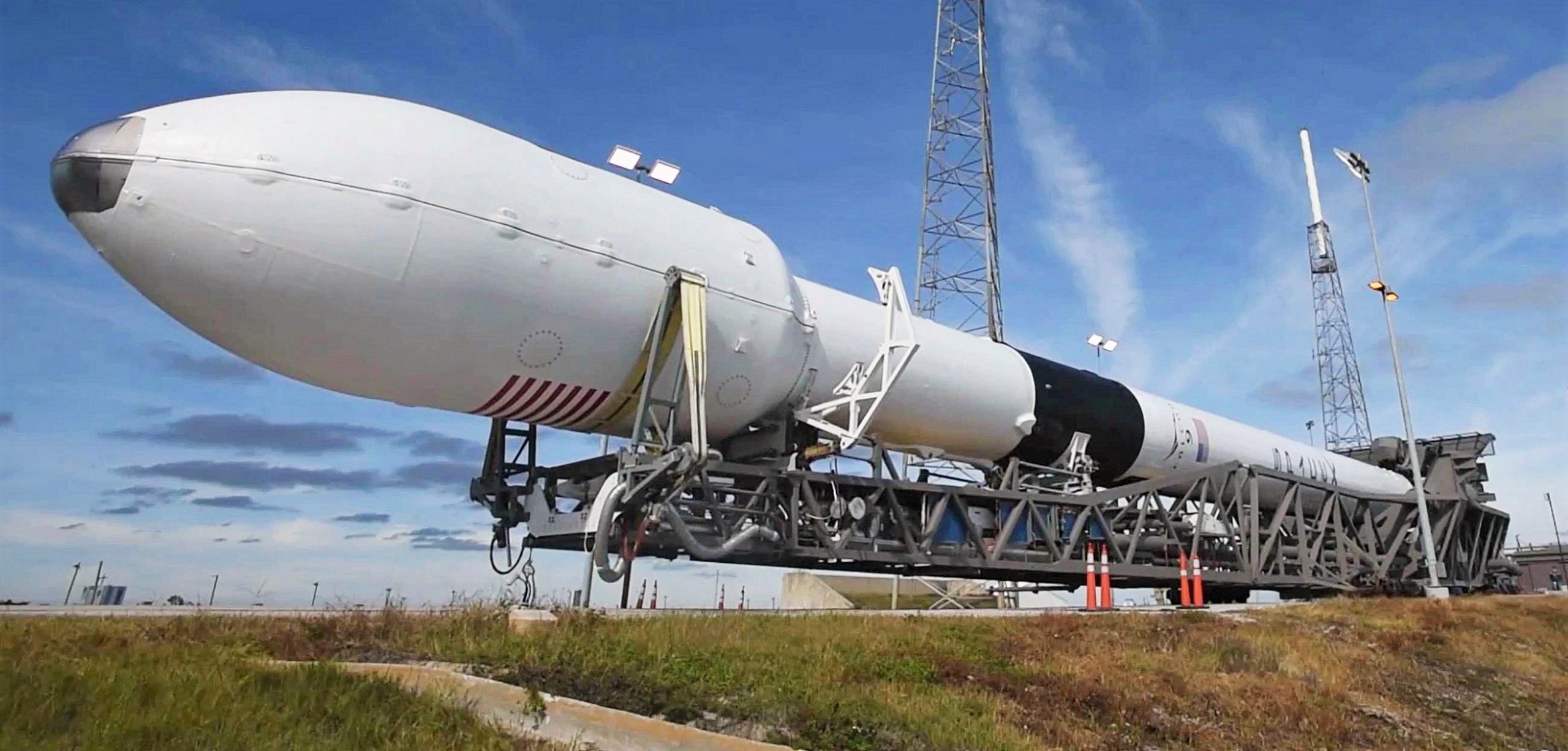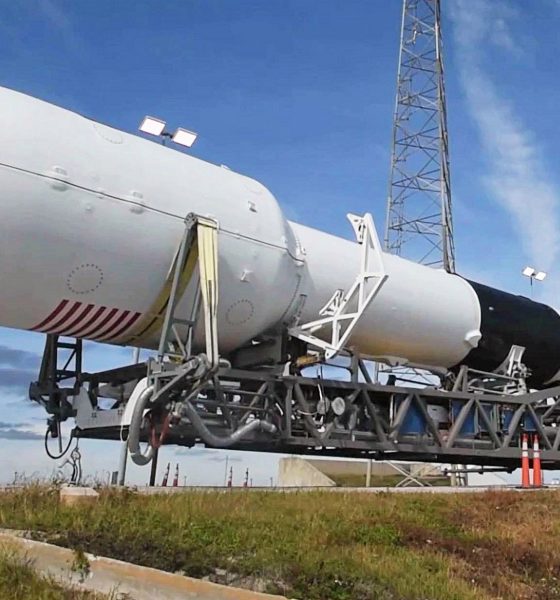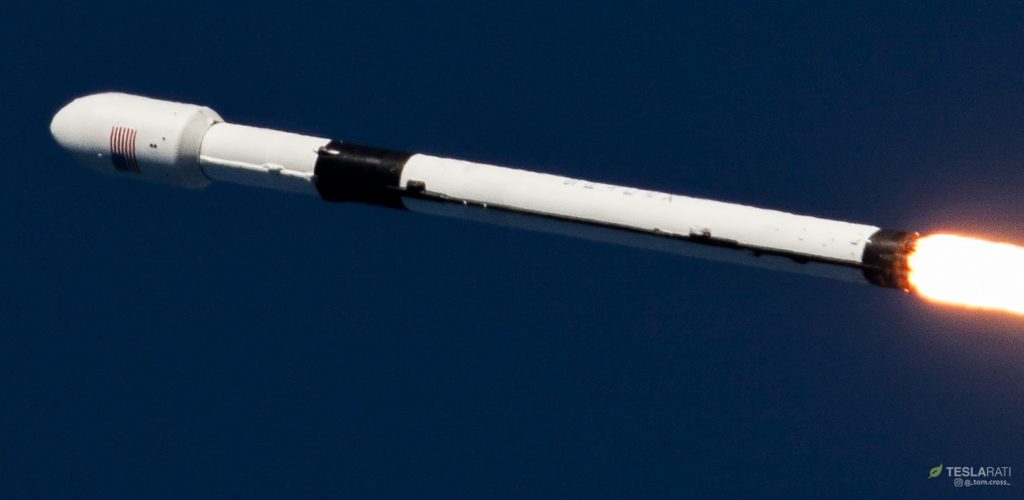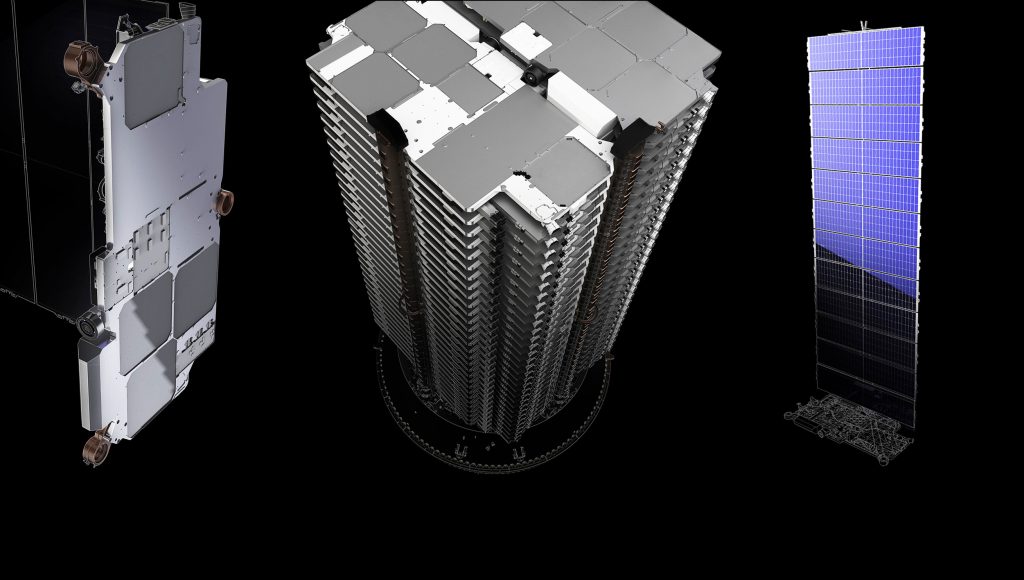

News
SpaceX Falcon 9’s next major US Air Force launch slips into early 2020 ahead of busy Q4
According to an August 20th update from the US Air Force’s Space and Missile Systems Center (SMC), SpaceX’s next dedicated USAF launch – the third completed GPS III spacecraft – has slipped one month and is now scheduled no earlier than (NET) January 2020.
Known as GPS III Space Vehicle 03 (SV03), SpaceX’s next US military launch will follow just a few months after United Launch Alliance (ULA) is set to launch GPS III SV02, scheduled to lift off at 9am EDT, August 22nd. SpaceX kicked off the lengthy GPS III launch campaign in December 2018, successfully placing the ~3900 kg (8600 lb) communications and geolocation spacecraft into a transfer orbit. The mission also marked SpaceX’s first intentionally expendable Falcon 9 Block 5 launch, a trend that may or may not continue with the company’s next GPS launch.
Known as GPS Block IIIA, SV01-03 are the first three of a batch of 10 spacecraft total, produced by Lockheed Martin for an anticipated cost of roughly $600M apiece. The US Government Accountability Office (GAO) expects [PDF] little to no cost savings per unit for Block IIIA’s follow-up, Block IIIF, in which 22 additional GPS III spacecraft will be built to fully upgrade the military’s GPS constellation. GAO estimates that those 22 satellites – likely to also be built by Lockheed Martin – will cost an incredible $12B, or ~$550M apiece.
On the scale of the US military’s woefully inefficient space procurement apparatus, ~$600M per satellite is sadly a pretty good deal. Two equally modern USAF satellite acquisition programs – the Advanced Extremely High Frequency (AEHF) and Space-Based Infrared System constellations – have both surpassed their initial cost estimates by more than a factor of two. Over the entire program, GAO estimates that six AEHF satellites no less than $3 billion each, while SBIRS is in even worse shape with six new satellites expected to cost $3.2 billion apiece.

Meanwhile, the Raytheon-built ‘OCX’ ground systems needed to take advantage of the ~$19B GPS III satellite upgrades has been just as much of an acquisition boondoggle, nearly doubling in cost over the last few years, bringing its final cost to no less than $6.2B after years of delays. All told, completing the upgraded GPS III constellation can be expected to cost a bare minimum of $25B. This cost doesn’t even include launches, but the cost of launching all the spacecraft is – in a rare instance – going to be a small fraction of the overall acquisition, perhaps $3-4B for all 32 satellites.
Regardless of the nightmarish costs and general inefficiency, Lockheed Martin and the USAF continue to slowly march towards initial GPS III operability. August 22nd’s ULA launch and January 2020’s SpaceX launch will take significant steps towards that capability, and will – with any luck – be followed by an additional two Falcon 9 GPS III launches in 2020. Six of ten IIIA satellites have already had launch contracts awarded, five of six of which were awarded to SpaceX.

End-of-year fireworks
GPS III SV03’s slip from December 2019 to January 2020 comes as plans for an ambitious final quarter have begun to take shape for SpaceX. Oddly, SpaceX is currently going through more than two months of downtime between its most recent launch (AMOS-17, August 6th) and its next mission (Starlink 1, NET late October). This will be the longest SpaceX has gone without launching since a catastrophic Falcon 9 failure grounded the company’s launch operations from September 2016 to January 2017.
By all appearances, customers’ payloads just aren’t ready, while SpaceX’s own Starlink constellation team is hard at work updating the satellite design and preparing for two back-to-back launches as early as October and November, potentially placing 120 high-performance satellites in orbit.


Aside from two Starlink launches scheduled in late-October and November, SpaceX has at least six other missions that could potentially launch in Q4 2019.
| Launch | Date (No Earlier Than) |
| Starlink 1 | October 17th |
| Starlink 2 | November 4th |
| Crew Dragon – In-Flight Abort | November 11th |
| ANASIS-II – South Korea | November – TBD |
| JCSat-18/Kacific-1 | November – TBD |
| Cargo Dragon CRS-19 | December 4th |
| Sirius XM-7 (SXM-7) | Q4 2019 – TBD |
| Crew Dragon – Demo-2 | December – TBD |
A lack of updates from Sirius XM and the fact that Crew Dragon’s Demo-2 launch will rely entirely upon the successful completion of its prior In-Flight Abort (IFA) mean that both will very likely slip into 2020. The remaining six launches, however, have a very decent chance of launching in 2019, assuming everything goes perfectly during satellite, Falcon 9, and launch pad pre-flight preparations.
SpaceX has successfully completed six launches in three months several times before, so six launches in Q4 2019 is entirely achievable, even if a pragmatist would do well to expect additional delays into 2020.
Check out Teslarati’s Marketplace! We offer Tesla accessories, including for the Tesla Cybertruck and Tesla Model 3.

Elon Musk
Elon Musk and Tesla AI Director share insights after empty driver seat Robotaxi rides
The executives’ unoccupied tests hint at the rapid progress of Tesla’s unsupervised Robotaxi efforts.

Tesla CEO Elon Musk and AI Director Ashok Elluswamy celebrated Christmas Eve by sharing personal experiences with Robotaxi vehicles that had no safety monitor or occupant in the driver’s seat. Musk described the system’s “perfect driving” around Austin, while Elluswamy posted video from the back seat, calling it “an amazing experience.”
The executives’ unoccupied tests hint at the rapid progress of Tesla’s unsupervised Robotaxi efforts.
Elon and Ashok’s firsthand Robotaxi insights
Prior to Musk and the Tesla AI Director’s posts, sightings of unmanned Teslas navigating public roads were widely shared on social media. One such vehicle was spotted in Austin, Texas, which Elon Musk acknowleged by stating that “Testing is underway with no occupants in the car.”
Based on his Christmas Eve post, Musk seemed to have tested an unmanned Tesla himself. “A Tesla with no safety monitor in the car and me sitting in the passenger seat took me all around Austin on Sunday with perfect driving,” Musk wrote in his post.
Elluswamy responded with a 2-minute video showing himself in the rear of an unmanned Tesla. The video featured the vehicle’s empty front seats, as well as its smooth handling through real-world traffic. He captioned his video with the words, “It’s an amazing experience!”
Towards Unsupervised operations
During an xAI Hackathon earlier this month, Elon Musk mentioned that Tesla owed be removing Safety Monitors from its Robotaxis in Austin in just three weeks. “Unsupervised is pretty much solved at this point. So there will be Tesla Robotaxis operating in Austin with no one in them. Not even anyone in the passenger seat in about three weeks,” he said. Musk echoed similar estimates at the 2025 Annual Shareholder Meeting and the Q3 2025 earnings call.
Considering the insights that were posted Musk and Elluswamy, it does appear that Tesla is working hard towards operating its Robotaxis with no safety monitors. This is quite impressive considering that the service was launched just earlier this year.
Elon Musk
Starlink passes 9 million active customers just weeks after hitting 8 million
The milestone highlights the accelerating growth of Starlink, which has now been adding over 20,000 new users per day.

SpaceX’s Starlink satellite internet service has continued its rapid global expansion, surpassing 9 million active customers just weeks after crossing the 8 million mark.
The milestone highlights the accelerating growth of Starlink, which has now been adding over 20,000 new users per day.
9 million customers
In a post on X, SpaceX stated that Starlink now serves over 9 million active users across 155 countries, territories, and markets. The company reached 8 million customers in early November, meaning it added roughly 1 million subscribers in under seven weeks, or about 21,275 new users on average per day.
“Starlink is connecting more than 9M active customers with high-speed internet across 155 countries, territories, and many other markets,” Starlink wrote in a post on its official X account. SpaceX President Gwynne Shotwell also celebrated the milestone on X. “A huge thank you to all of our customers and congrats to the Starlink team for such an incredible product,” she wrote.
That growth rate reflects both rising demand for broadband in underserved regions and Starlink’s expanding satellite constellation, which now includes more than 9,000 low-Earth-orbit satellites designed to deliver high-speed, low-latency internet worldwide.
Starlink’s momentum
Starlink’s momentum has been building up. SpaceX reported 4.6 million Starlink customers in December 2024, followed by 7 million by August 2025, and 8 million customers in November. Independent data also suggests Starlink usage is rising sharply, with Cloudflare reporting that global web traffic from Starlink users more than doubled in 2025, as noted in an Insider report.
Starlink’s momentum is increasingly tied to SpaceX’s broader financial outlook. Elon Musk has said the satellite network is “by far” the company’s largest revenue driver, and reports suggest SpaceX may be positioning itself for an initial public offering as soon as next year, with valuations estimated as high as $1.5 trillion. Musk has also suggested in the past that Starlink could have its own IPO in the future.
News
NVIDIA Director of Robotics: Tesla FSD v14 is the first AI to pass the “Physical Turing Test”
After testing FSD v14, Fan stated that his experience with FSD felt magical at first, but it soon started to feel like a routine.

NVIDIA Director of Robotics Jim Fan has praised Tesla’s Full Self-Driving (Supervised) v14 as the first AI to pass what he described as a “Physical Turing Test.”
After testing FSD v14, Fan stated that his experience with FSD felt magical at first, but it soon started to feel like a routine. And just like smartphones today, removing it now would “actively hurt.”
Jim Fan’s hands-on FSD v14 impressions
Fan, a leading researcher in embodied AI who is currently solving Physical AI at NVIDIA and spearheading the company’s Project GR00T initiative, noted that he actually was late to the Tesla game. He was, however, one of the first to try out FSD v14.
“I was very late to own a Tesla but among the earliest to try out FSD v14. It’s perhaps the first time I experience an AI that passes the Physical Turing Test: after a long day at work, you press a button, lay back, and couldn’t tell if a neural net or a human drove you home,” Fan wrote in a post on X.
Fan added: “Despite knowing exactly how robot learning works, I still find it magical watching the steering wheel turn by itself. First it feels surreal, next it becomes routine. Then, like the smartphone, taking it away actively hurts. This is how humanity gets rewired and glued to god-like technologies.”
The Physical Turing Test
The original Turing Test was conceived by Alan Turing in 1950, and it was aimed at determining if a machine could exhibit behavior that is equivalent to or indistinguishable from a human. By focusing on text-based conversations, the original Turing Test set a high bar for natural language processing and machine learning.
This test has been passed by today’s large language models. However, the capability to converse in a humanlike manner is a completely different challenge from performing real-world problem-solving or physical interactions. Thus, Fan introduced the Physical Turing Test, which challenges AI systems to demonstrate intelligence through physical actions.
Based on Fan’s comments, Tesla has demonstrated these intelligent physical actions with FSD v14. Elon Musk agreed with the NVIDIA executive, stating in a post on X that with FSD v14, “you can sense the sentience maturing.” Musk also praised Tesla AI, calling it the best “real-world AI” today.








